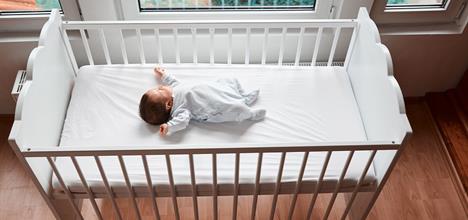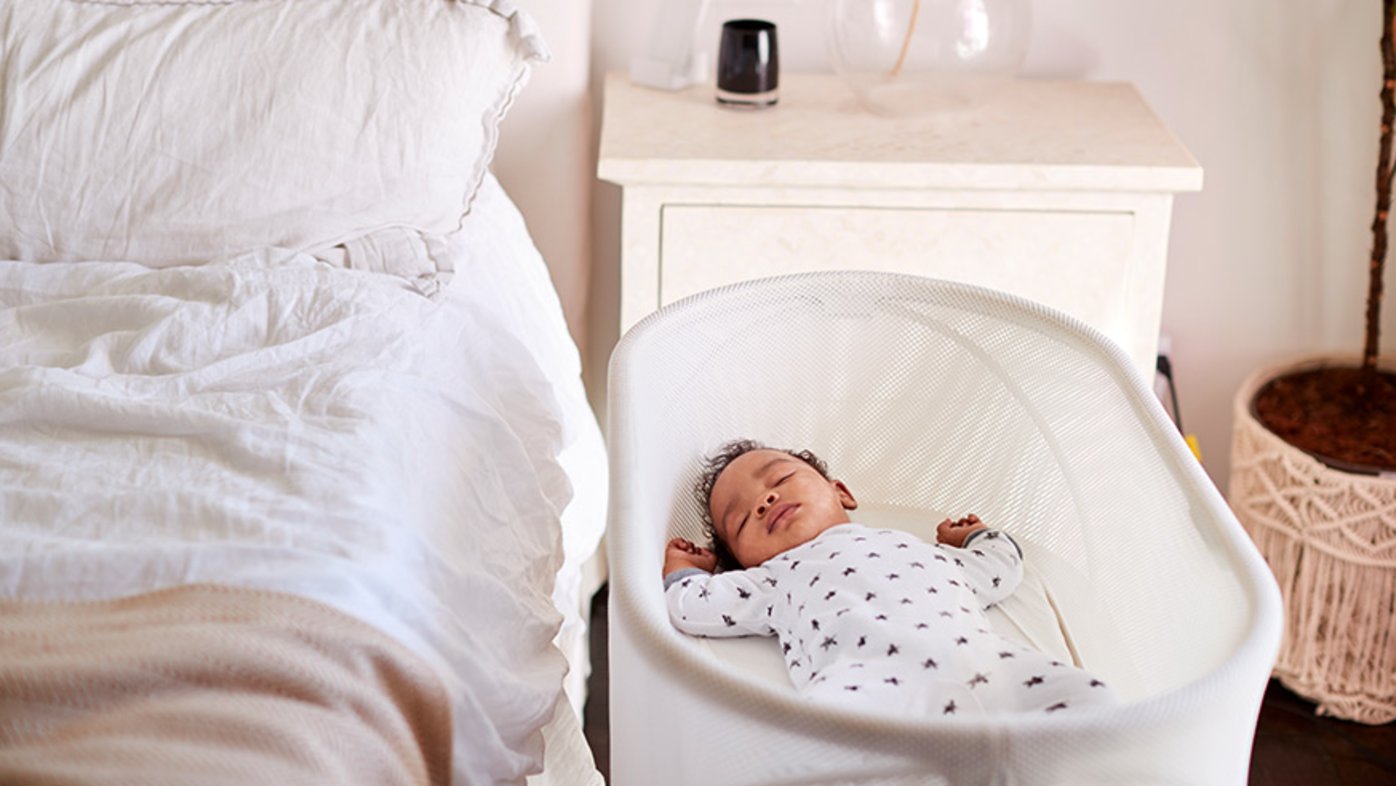American Pediatric Association Infant Sleep Bed 18 Month Recommendation
The American Pediatric Association recommends that infants aged 18 months should sleep in a crib, bassinet, or portable crib with a firm mattress and tight-fitting sheet. The infant’s sleep area should be free from soft objects such as pillows, blankets, stuffed animals, bumpers and toys. Infants should not be placed on an adult bed for sleeping due to the risk of suffocation or entrapment between the wall and mattresses.
Parents are encouraged to put their baby down for sleep drowsy but awake in order to promote self-soothing skills; this is known as “sleep training”. Lastly parents are advised against using any kind of device designed to hold an infant in place while asleep such as wedges or positioners due to lack of evidence regarding safety.
The American Pediatric Association recommends that infants sleep in their own bed from 18 months of age and up. This recommendation is based on research showing that sleeping in a separate bed helps babies establish healthy sleep habits, reducing the risk for nighttime awakenings or early morning risers. Additionally, it allows parents to respond quickly if the baby wakes during the night and needs comforting or attention.
It also reduces the risk of accidental suffocation and SIDS by providing a safe space for infant sleep.
American Academy of Pediatrics Sleep Recommendations by Age
The American Academy of Pediatrics (AAP) recommends that children aged 6 months to 5 years old get 11-13 hours of sleep per day, while school age children from 6-12 should be getting at least 10 hours. For teens and adolescents, 8-10 hours is recommended for optimal health and wellness. The AAP also encourages making sure the environment is conducive to good sleep hygiene; this includes keeping electronics out of bedrooms and establishing a regular bedtime routine.
American Academy of Pediatrics Sleep Guidelines 2022
The American Academy of Pediatrics (AAP) recently released their updated sleep guidelines for 2022. According to the new guidelines, infants 4 months and younger should be getting 14-17 hours of nighttime sleep per day while infants 4-12 months old should get 12-16 hours each night. For children 1-2 years old, 11-14 hours is recommended while toddlers 3-5 years old need 10-13 hours every night.
The AAP also suggests that school age children 6–12 years old require 9–12 hours a night and teens 13–18 years should aim for 8–10 hours a day.
Aap Safe Sleep Guidelines 2022 Pdf
The American Academy of Pediatrics (AAP) has just released their updated Safe Sleep Guidelines for 2022, which are available in PDF format. This important document provides pediatricians and parents with the latest information on safe sleep practices for babies from birth to one year of age. It includes helpful tips such as always placing infants on their backs to sleep, using a firm sleeping surface, removing any blankets or stuffed animals from the baby’s sleep area, and avoiding co-sleeping.
The guidelines also provide advice on when it is appropriate to transition a baby from swaddling or using other infant products that reduce the risk of Sudden Infant Death Syndrome (SIDS).
Aap Safe Sleep Guidelines 2022 Changes
The American Academy of Pediatrics (AAP) recently released their updated Safe Sleep Guidelines for 2022. The guidelines emphasize the importance of avoiding bed sharing and providing a safe sleep environment to reduce the risk of sudden infant death syndrome (SIDS). New recommendations include placing babies in a separate sleeping space, such as a crib or bassinet, with no soft objects; using firm sleep surfaces that are free from any debris, pillows, quilts or stuffed animals; and keeping infants cool by dressing them lightly and avoiding over-bundling.
These changes represent an important step towards ensuring the safety of our youngest citizens.
Aap Sleep Guidelines for Toddlers
According to the American Academy of Pediatrics (AAP), toddlers aged 1-2 years should get 11-14 hours of sleep in a 24 hour period, including naps. To ensure quality sleep for your toddler, make sure to establish consistent bedtime and wake up routines that are appropriate for their age. It is also important to create a safe and comfortable environment for them by keeping the bedroom dark, quiet and free from distractions such as screens or toys.
Finally, encourage healthy habits throughout the day such as limiting caffeine intake and engaging in physical activity to help promote better rest at night.
Aap Infant Sleep Guidelines
The American Academy of Pediatrics (AAP) recently released new guidelines for infant sleep that recommend babies share a room with their parents, but not the same bed. This helps reduce the risk of sudden infant death syndrome (SIDS) and other sleep-related deaths. The AAP also recommends that infants be placed on their back to sleep, use a firm sleep surface and keep soft objects out of baby’s sleeping environment.
Finally, breastfeeding is recommended as it has been associated with lower SIDS rates compared to formula feeding. Following these guidelines can help ensure your little one gets the best night’s rest possible!
Aap Safe Sleep Guidelines Blanket
The American Academy of Pediatrics (AAP) Safe Sleep Guidelines recommend avoiding the use of soft bedding, including blankets, quilts, pillows and sheepskins in an infant’s sleep area. Blankets should not be placed over the head or tucked tightly around a baby’s neck as this can increase the risk for suffocation. Instead, parents should opt for breathable materials like wearable blankets to keep their babies warm while sleeping.
New Safe Sleep Guidelines for Babies
The American Academy of Pediatrics recently released updated safe sleep guidelines for infants that recommend babies be placed on their backs to sleep, in a crib free from blankets, pillows and stuffed animals. The AAP also recommends that parents share a room with the baby (but not the same bed) until at least six months of age, or ideally one year. These new guidelines are meant to reduce the risk of Sudden Infant Death Syndrome (SIDS).

Credit: www.healthychildren.org
What are the Aap Recommendations for Toddlers Sleep?
The American Academy of Pediatrics (AAP) has provided a set of evidence-based recommendations for toddlers’ sleep. These guidelines suggest that toddlers should get between 11 and 14 hours of total sleep per day, including naps. This includes 10 to 13 hours at night and 1 to 3 hours during the day in one or two daily naps.
In addition, the AAP encourages families to develop consistent routines surrounding bedtime and wake times to help promote healthy sleep patterns. Bedtimes should be appropriate for each individual toddler’s age as well as their natural circadian rhythms, while avoiding late nights that can disrupt nighttime sleeping patterns. Lastly, they recommend limiting screen time before bed as this can interfere with regular sleep cycles.
Following these recommendations will enable your toddler to receive adequate rest each night so they have enough energy throughout the day!
Does the Aap Recommend Sleep Sacks?
Yes, the American Academy of Pediatrics (AAP) recommends sleep sacks as a safe alternative to loose blankets in cribs for babies. Sleep sacks are wearable blankets that can be used instead of traditional bedding like sheets, comforters, or quilts. The AAP believes that sleep sacks reduce the risk of accidental suffocation and strangulation associated with loose bedding, making them one of the safest options for keeping infants warm while they sleep.
For maximum safety and comfort, it is important to choose a sack that fits correctly and is made from breathable fabrics like cotton or bamboo blends. It is also recommended to keep extra layers off your baby’s face when using a sleep sack to ensure proper air flow during their slumber. With these tips in mind you can rest assured knowing your infant will be sleeping soundly and safely in their sleep sack!
What are the Aap Recommendations for Sleep Hours?
The American Academy of Pediatrics (AAP) recommends that children between the ages of 6 and 12 should get 9-12 hours of sleep each day, while teenagers between 13 and 18 should get 8-10 hours. Additionally, the AAP advocates for consistent bedtime routines, such as no screen time at least an hour before bedtime, to ensure restful sleep. The organization also suggests avoiding caffeine after lunch; exposure to bright light in the evening; and are not using electronic devices close to bedtime as these activities can disrupt normal sleeping patterns.
Finally, it’s important for parents to take steps to create a comfortable environment that supports healthy sleep habits—for example keeping bedrooms dark and quiet so they become associated with relaxation cues rather than stimulation. By following these recommendations from the AAP on how much sleep is needed for children and teens combined with creating a positive pre-bed environment you can help maximize your child’s chances for getting plenty of restorative shut eye!
Is Bed Sharing Recommended by the American Academy of Pediatrics?
The American Academy of Pediatrics (AAP) does not recommend bed sharing for infants, as it can increase the risk for sudden infant death syndrome (SIDS). Bed sharing is when a parent and baby sleep in the same sleeping area. The AAP recommends that babies should sleep in their own crib or bassinet in the parents’ bedroom until at least 6 months of age.
This arrangement helps to reduce SIDS risk while still promoting bonding between parent and child. Additionally, since bed sharing increases the potential danger of suffocation due to an adult rolling over onto an infant, having a separate sleeping space promotes safer sleep habits and reduces potential hazards. The AAP also warns against using blankets or pillows when placing an infant on its back to sleep; these items pose choking risks if they become wrapped around a baby’s face or neck during sleep.
When is a good age to stop using a baby sleeping bag?
Conclusion
In conclusion, the American Pediatric Association has provided clear guidelines for 18-month old infants and their sleep habits. It is important for parents to understand that these recommendations are based on research and should be taken seriously. By following this advice, parents can help ensure that their children have healthy sleeping patterns which will benefit them in the long run.

